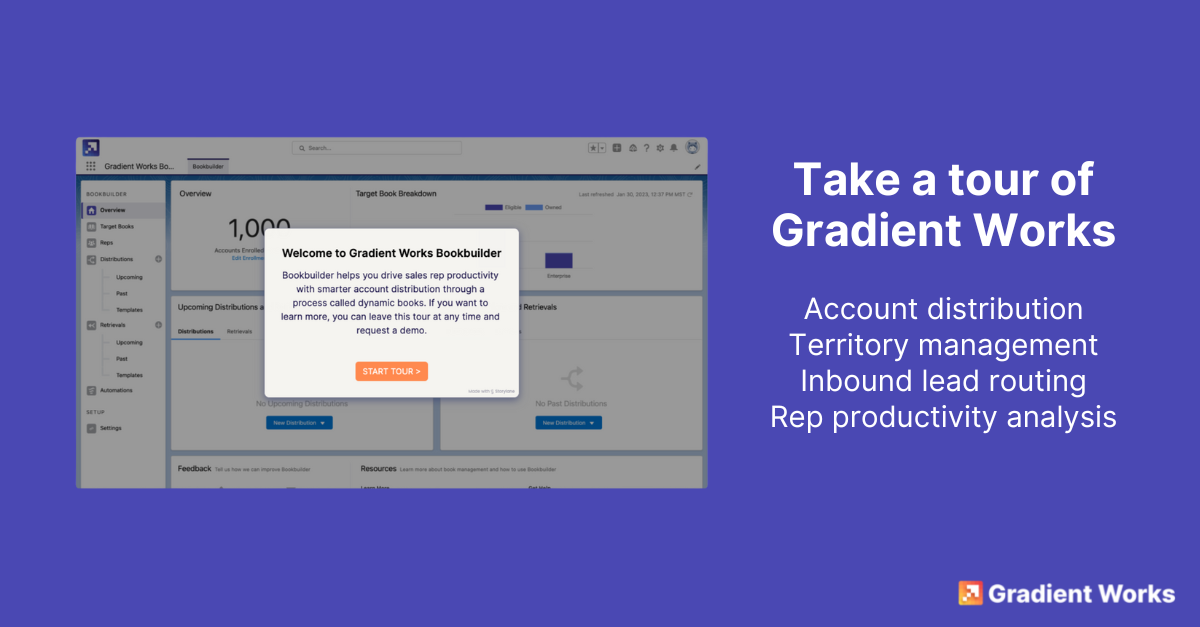Today, I want to talk about customer handoffs and account ownership. Account handoffs are a lot more than just moving a customer from sales to customer success.
Throughout the customer lifecycle, a customer will interact with a lot of people in your company. Whether you think of your customer journey as a funnel, flywheel, Venn diagram, or even a mountain, the transitions between stages involve a lot of customer handoffs.
And you've probably read plenty about improving handoffs at the rep level, most of it focusing on the new business to customer success transition. The transition from prospect to paying customer is an important transition for sure. And anything that causes friction in that handoff is bad - it starts the future of the customer relationship on the wrong foot, which can lead to dissatisfaction and even future churn.
But we don’t pay as much attention to all the other handoffs a customer experiences. And they are myriad.
What are some of the potential handoffs a customer might experience?
- To BDR/SDR/MDR
- To sales rep
- To sales engineer
- To onboarding rep
- To customer success manager
- To account manager
- To new CSM/AM/AE
- To customer support rep
- (Back) To marketing
Not every customer or every product will have all of these handoffs, but some will go through even more than these. Some of these are official, formal handoffs - like when a new business prospect becomes a paying customer and moves from a sales rep to a CSM. In other cases, they're less formal - not a full handoff, but more of a temporary interlude with a new contact, like interacting with customer service or customer marketing.
All these handoffs have major implications for a customer's experience with your company. So let's talk about the different categories of handoffs. I'm going to use a very coarse metaphor here, so please indulge me. Let’s start by imagining the customer is your child (there a hundred reasons why this is a terrible metaphor, but it’ll mostly work for our purposes). There are a few kinds of handoffs:
- Ownership. Major, intentional handoffs akin to reassigning full custody of a child. Sometimes custody (ownership) changes, and those interactions are typically formalized, communicated, and significant. In the customer relationship, these are the major account owners - an account executive, customer success manager, or account manager.
- Supervision. Intentional care and control interactions like hiring a babysitter or sending your kid to school. You've generally vetted these contacts, and have objective-based goals for the interaction. In the customer relationship, this might be a sales engineer or renewal rep - someone who's taking over the account for a little while to accomplish something.
- Temporary. This is like a visit from a relative, or a chat with a friend. They’re people you know will be in your kid’s orbit, and you're on the same page about appropriate behavior around your child. This could be an interaction with a customer support rep or customer marketing. They're usually short-lived transactions with no ownership changes.
- Ancillary. These are strangers, random kids at the park, the general public. These don't have to be negative interactions, but they carry greater risk than interactions with people you know. This could be former customers and employees, news media, and the like. You never know what they're going to say or do, or how your child will encounter them, and you can't control those interactions.
Customers are handed off - intentionally and unintentionally - all the time, and these handoffs can have an outsized impact on their experience with your company. The customer lifecycle is a system, and every interaction, every process has an impact on everything around it. So you need to think about customer handoffs as a whole, not just interaction by interaction.
First, let's talk about the major handoffs, changes in account ownership. Customer account ownership is incredibly important to the success of a subscription business. You’re assigning responsibility for an account to a human - one who's accountable for a business result, but also responsible for the happiness of the customer. Each of these assignments is an investment, an allocation of resources, with opportunity costs and potential returns.
So don't take ownership changes lightly. Make sure handoff themselves is smooth - communicated clearly, happens in a timely fashion. But also think about when and to whom a customer account is assigned. Is the account owner the right person for this account? Do they have too many (or not enough) accounts? Do they have the information and tools they need to care for this account? Is this the right time to change this account's owner? And you need to think about these issues across your company - how do you think about account ownership as a whole?
As for supervisory and temporary handoffs, you should be thinking about how many of these there are, and what impact they have on the major ownership relationship. For example, how many marketing emails and company newsletters does your customer get? Does she get bugged by chatbots when she's on your website? If she has a support question, where does she go? Who's talking to her about product usage and account expansion? All these little interactions - they're not even really handoffs - add up. If there are too many, or if they're in conflict with each other, they can negatively impact customer experience. They may confuse a customer, so she's not sure who to ask for what. They may annoy a customer if there are too many or they are too interruptive.
So while you might not think about your marketing efforts or customer service as official customer handoffs, you need to realize the impact these interactions have on customer experience, and the role they play in account ownership. Customer satisfaction is the responsibility of everyone at your company, not just the official account owner.
Finally, a quick note about the ancillary interactions, the strangers... If you thoughtfully handle all the handoffs you can control, then the ancillary interactions will have less impact on your customers. A happy customer who feels secure with your company won't be as easily impacted by a random mention of your company somewhere else. Positive remarks will reinforce her opinion, and negative ones just won't get through.
The customer lifecycle is an interconnected system that impacts - and is impacted by - dozens of interactions throughout your company. Make sure you're paying attention to all them.





